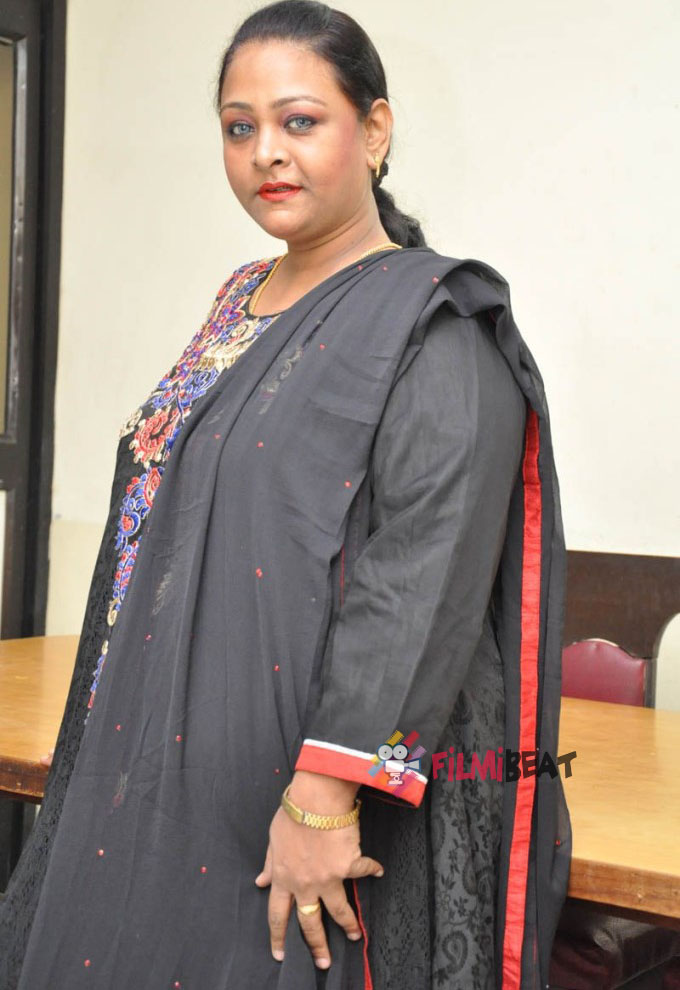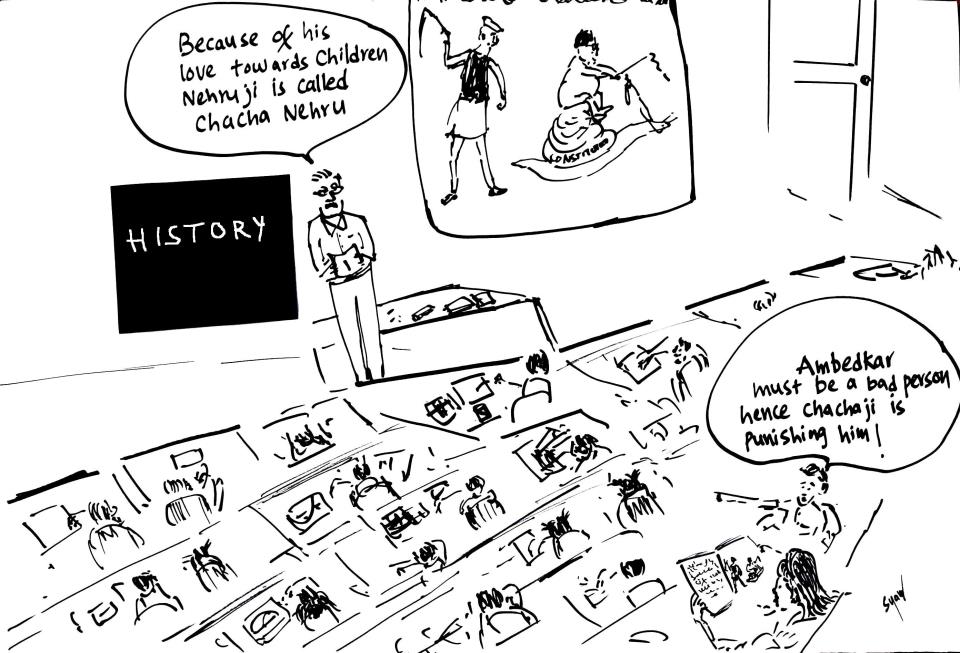Rohan Arthur
 Last week, I went to watch Somnath Waghamare’s film, ‘The Battle of Bhima Koregaon: An Unending Journey’ at Alternative Law Forum, Bangalore. This was the second screening of the film, after the first being screened at FTII, Pune. The 50 minute documentary is only one part of the viewing experience. The post-film discussion with Somnath completes the overall viewing experience, and I came away feeling like I just had my batteries charged. I first met Somnath a few months ago, and have been following his work and drawing valuable inspiration ever since. He is a courageous young man who is committed to the cause of the Ambedkarite movement.
Last week, I went to watch Somnath Waghamare’s film, ‘The Battle of Bhima Koregaon: An Unending Journey’ at Alternative Law Forum, Bangalore. This was the second screening of the film, after the first being screened at FTII, Pune. The 50 minute documentary is only one part of the viewing experience. The post-film discussion with Somnath completes the overall viewing experience, and I came away feeling like I just had my batteries charged. I first met Somnath a few months ago, and have been following his work and drawing valuable inspiration ever since. He is a courageous young man who is committed to the cause of the Ambedkarite movement.
This film is not about dead Dalits. This is not a documentary film about the horrible atrocities that Dalits face, as part of their daily lives. This is not a film about a forward caste superhero coming to save the Dalits from their plight. Battle of Bhima Koregaon: an unending journey is an assertion about assertion. Somnath Waghamare’s film is a documentary capturing the annual commemoration of Bhima Koregaon, that happens on Dec 31-Jan 1st every year. The annual event sees lakhs of visitors, many of whom are often repeat visitors. Why do so many people go to this place? What is the attraction that is drawing these huge multitudes of people from all over India, and even from foreign countries, to an out-of-the-way village near Pune?

Somnath Waghamare, who holds a Master’s degree in Media Studies from Pune University, grew up with the story of Bhima Koregaon as part of his personal history. But this heroic history is not visible anywhere in public discourse: no newspaper, magazine, TV serial, movie…. Nothing in the ‘mainstream’ even mentions this place. In fact, all of these media valourize and glorify the Peshwa rule, as if it was a glorious time of untold harmony and riches. Somnath and many of us know that this is all a big lie. The Peshwa rule in the 19th century is one of the most heinous and criminal periods in world history. The Peshwas were guilty of enslaving their own subjects, the ones they considered as lower-caste and out-caste, in the most brutal and humiliating ways. The media also shows Anna Hazare’s village, Ralegan Siddhi, as a model village, but inexplicably skips Bhima Koregaon’s story. The site is literally a stone’s throw away!
The Mahar regiment in 1818 was made up exclusively of Mahars, a scheduled caste community in Maharashtra. Somnath’s film talks about the battle between the Mahar regiment and the Peshwa’s armies. Though each Mahar soldier was outnumbered 50 to 1, the battle was won by the Mahars. Though this might seem like a small page in the history of British colonization in India, this battle must be seen as a battle for self-respect and as a battle for freedom. However, this glorious episode from history was soon forgotten, and it was not until Babasaheb Ambedkar re-instated the Mahar Regiment, and visited the site of Koregaon, that it became a festival ground for the backward caste people of Maharashtra and of India.
The film opens with a scene of a band, with different percussion instruments, shouting war cries of “JAI….. JAI BHIM”. These are not the helpless, victim Dalits that award winning forward caste film makers love so much. Bhima Koregaon is a celebratory event, a commemoration of our victory, and our continuing struggle.
The film takes us through the various parts of the festival grounds, and the various ways in which the event is celebrated. There are many conversations with visitors at the festival, and also with expert commentators and historians. In a sense the film works in two parallel time-lines. One, the hopeful and jubilant celebration of the present, and two, the remarkable yet neglected story from the past. Secondly, the film’s title refers to ‘The’ Battle of Bhima Koregaon… but one should not confuse it as a single event in history… the rest of the title makes it clear that it is an ‘Unending Journey’. The battle against the Brahmanical forces continues to rage in India, even in neighbouring Pune, on a daily basis. The story-line of Bhima Koregaon itself saw a pause with the de-commissioning of the Mahar soldiers. Then the battle was re-instated by Babasaheb’s efforts to include them again as a regiment in the British Indian army, and that regiment proudly stands to this day. In fact, there is a touching sequence in the film which shows a guard of honour given by retired veterans from the regiment. This is followed by a sequence showing old women, visitors, saluting the victory pillar. This is a direct criticism of Indian nationalism. The honour and glory belongs to the victory of the Mahars over the powerful Peshwas.
The documentary shows so many people, from so many parts of the world, but not one ‘dignitary’. There are ‘regular’ people, folk musicians, buddhist monks, dancers, old people, parents with infants. But not one film star or politician or celebrity is to be seen! This is perhaps because the film is not about them. It is about the very people who visit this place every year, who are the same people who put the place on the map back in 1818.
This documentary film is a celebration of a celebration, and an assertion of an assertion. It serves ample criticism to the ruling class, their media, their power structure and their hollow pride. It also critiques the Ambedkarite movements, and cautions against fragmentation of ideology for the sake of different causes. Somnath dedicates the film to Rohith Vemula, and it is a powerful symbol that the final shot, before the dedication, is of a little boy, looking around in wide-eyed wonder. As screenings of the film are being planned in different cities, please go ahead and plan your own screenings, and get in touch with Somnath for this. If not, just go watch it whenever you get a chance, and try to speak to Somnath too, if he’s around. One doesn’t often come across a person with such rock-solid conviction.
Jai Bhim.
~
Further reading
1) Somnath’s experience while making the film: https://roundtableindia.co.in/index.php?option=com_content&view=article&id=9041:somnath-waghamare&catid=129:events-and-activism&Itemid=195
2) Dhruwa’s scathing criticism of Anand Patwardhan’s ‘Jai Bhim Comrade’: https://roundtableindia.co.in/index.php?option=com_content&view=article&id=8804:dhruwa-r&catid=119:feature&Itemid=132
~~~
Rohan Arthur works in an MNC in Bangalore. He is interested in music, history and photography.










